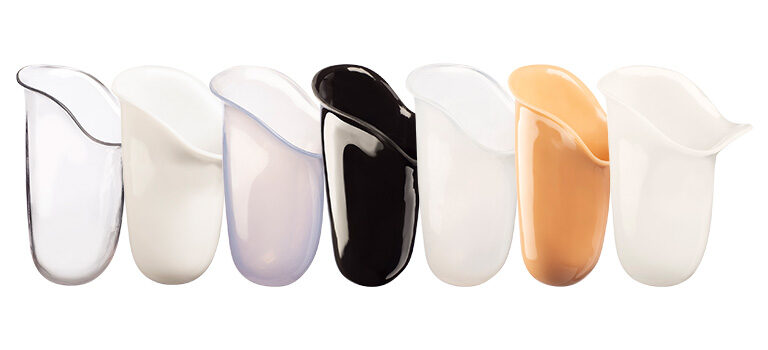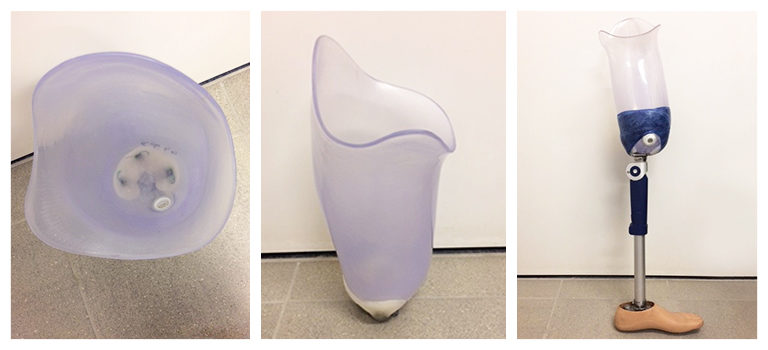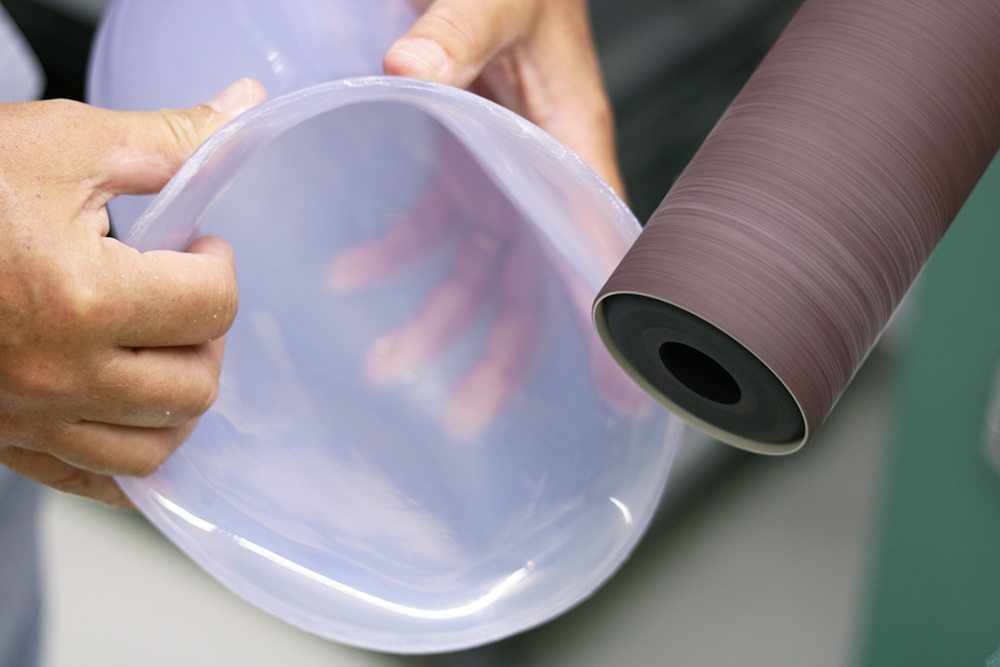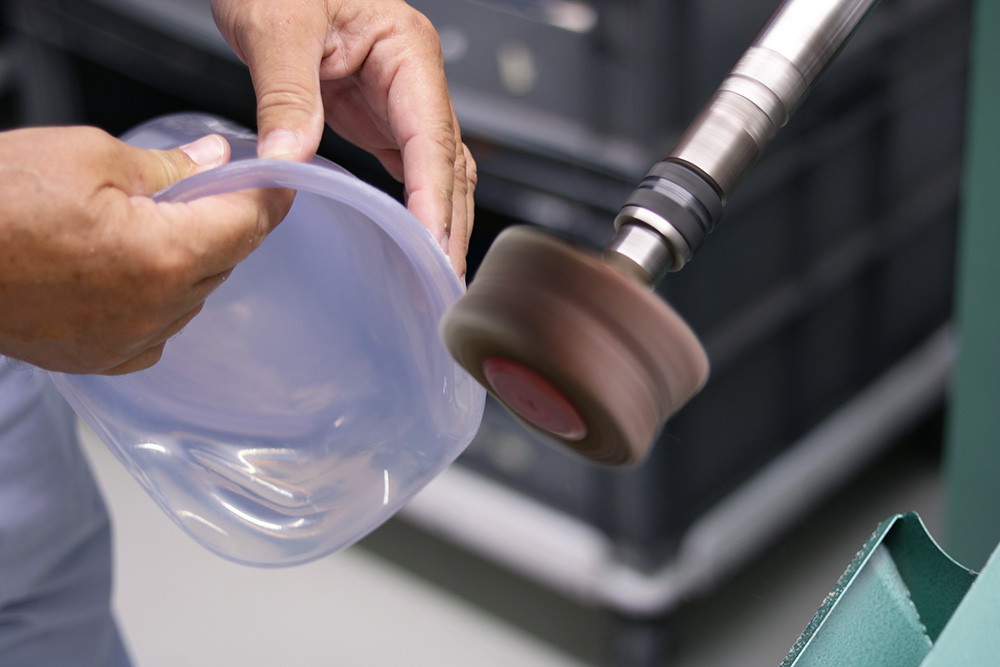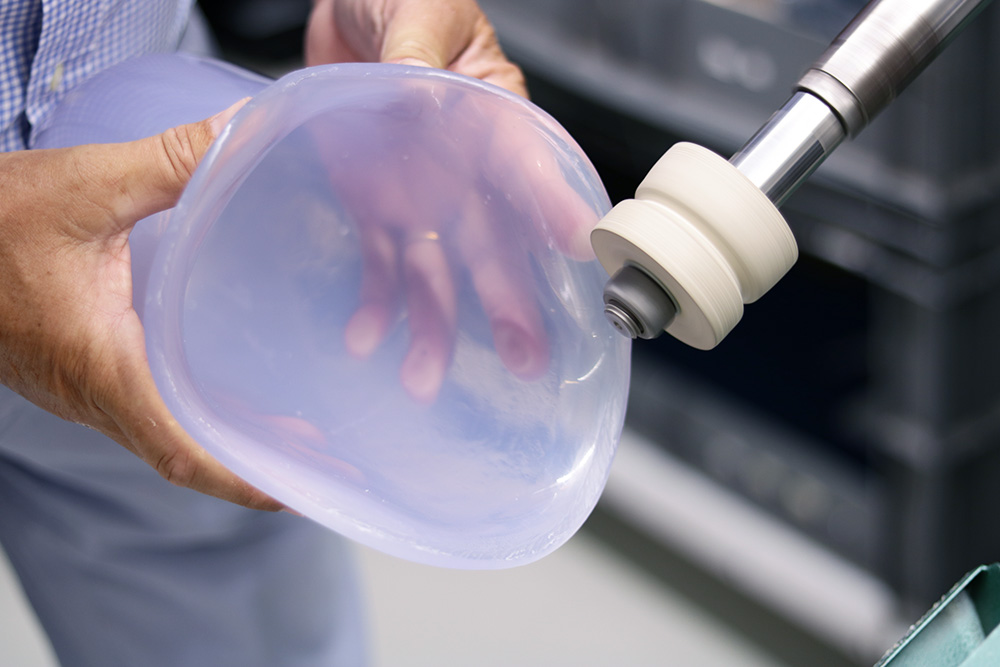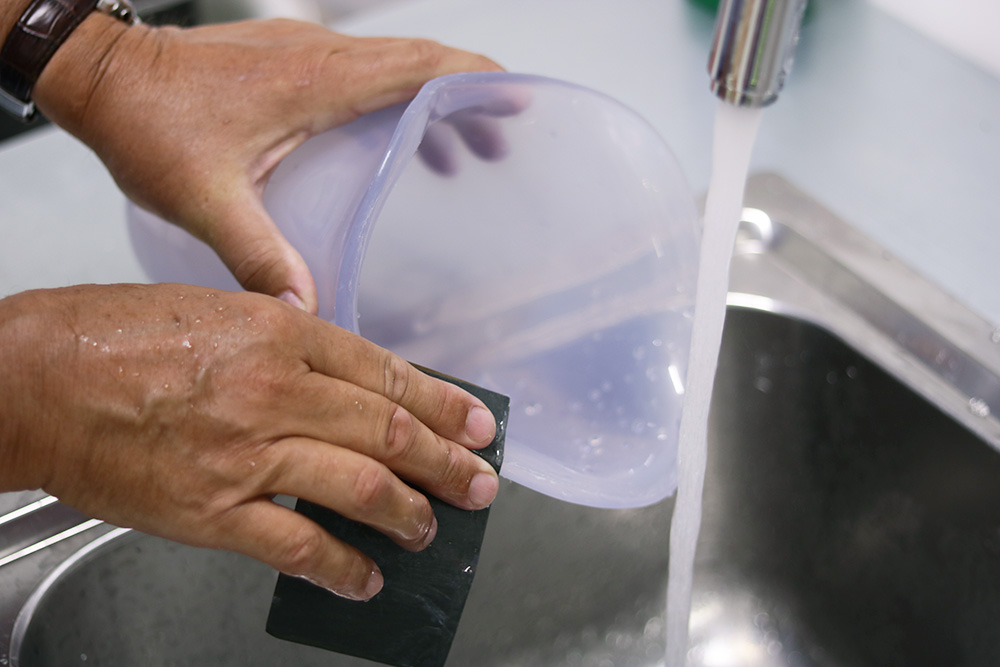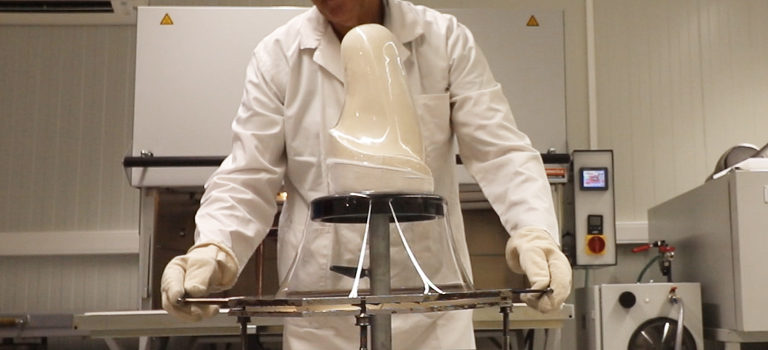
How to Finish an Orfitrans Thermoplastic Socket?
A perfectly finished socket for optimal patient comfort
Once you have pulled a thermoplastic socket and let it cool down, it is time to remove the socket from the positive mould and finish it in a few additional steps.
It is important to cut and smooth the edges of the socket correctly in order to ensure a good fit. A well-fitting socket will provide comfort and prevent injury.
Follow along as we take you through the steps to obtain a perfectly finished socket.
Step 1: Remove the socket from the positive mould and saw off the excess material
Once the thermoplastic socket has fully set, you can carefully remove it from the positive mould. Wait preferably 24 hours before getting started on this process. Do not try to speed up the cooling process with cold air as this can change the quality of the socket.
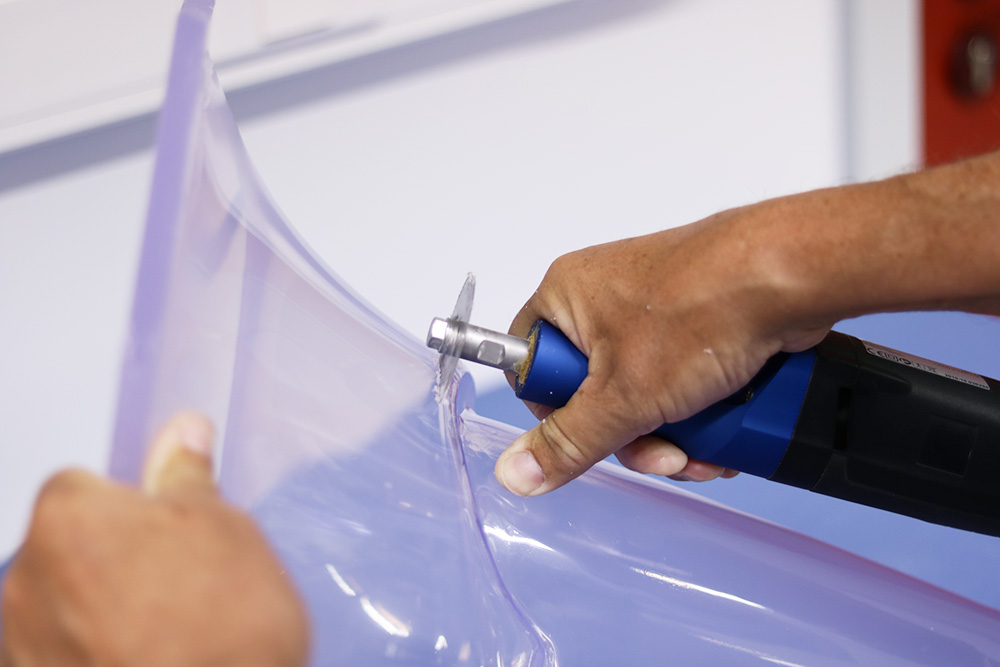
To remove the socket, cut along the curved edges of the plaster mould to remove the excess thermoplastic material. Then, pull the socket from the mould, or if necessary, break the (plaster) mould. Saw off the excess thermoplastic material.
Take care to not damage the thermoplastic socket in this process. If you happen to damage the socket, you can – in some cases – remove the damage by lightly sanding and smoothing the affected area.
Step 2: Grind the edges of the socket coarsely
Use a router socket machine to give the edges of your socket a first coarse grind:
- Begin with a grit of 40 to give the edges of the socket an initial grind.
- Follow this up with a grit of 80 to obtain a finer texture.
Keep in mind that Orfitrans thermoplastic materials are heat sensitive and can melt under high temperatures. The grinding process can generate a lot of heat, so make sure to not keep the grinding rolls in the same position for too long.
Step 3: Smooth the edges by sanding them softly
Now it’s time to polish the edges of the thermoplastic socket. Use the following materials to obtain perfectly smooth edges:
.
Step 4: Adding accessories
When the edges of the socket are finished, you can start adding accessories (e.g. valves). Create appropriate holes in the socket with the help of a milling machine or a drill. Thanks to the robust characteristics of the Orfitrans thermoplastic, you can rest assured that the material will not break, tear or shatter.
After following these steps, you will be able to give your patient a perfectly finished and highly qualitative thermoplastic socket that provides the support and comfort needed.
Interested in learning how to fabricate an Orfitrans check socket from scratch? Read our step-by-step guide.
![]()

Written by Marc Blij
Marc studied in Brussels and London and is a Certified Orthotist and Prosthetist.
After working in an O&P lab at the Universities of Louvain and Brussels, he decided to set up his own O&P lab in Antwerp. For over 30 years, he ran his own practice, together with his wife.
Since 2006, Marc works at the Orfit Industries headquarters in Wijnegem (Belgium) as a Product and Educational Specialist in Orthotics & Prosthetics and Physical Rehabilitation.
![]()
If you’d like to receive the latest product updates and interesting Orfit news, subscribe to our newsletter:

